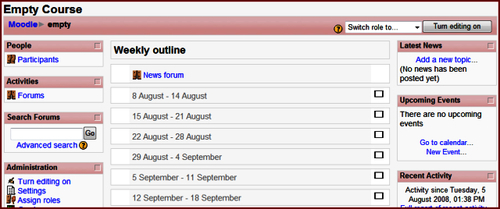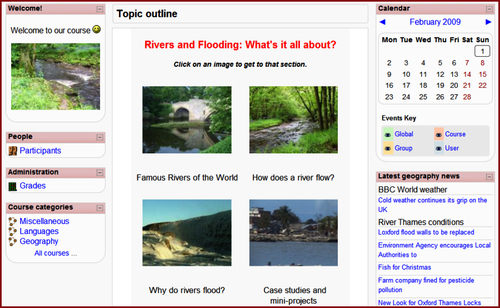Let's assume you've been given an empty Moodle course page. When you first go to your course page, you'll probably see something that looks like this:

Don't be disheartened if this doesn't mean much to you at this stage. If you were to flick through to the end of the book, you would find our completed work far more welcoming:

There are three columns; two narrow ones on the right and left, containing some blocks, and a wider column in the middle. This wider column is the work area, to which we will start adding our teaching materials (this will be covered in detail in Chapter 2). The name of the course (Empty Course, for now) appears on the upper left, and an abbreviated version (empty) will appear in the bar below it (the bar is called a breadcrumb trail). The block called Administration is just for the teachers. It allows us (teachers) to perform various actions for our course. Let's start by changing the course name to what we want, and setting up the work area to something more suitable for us.



